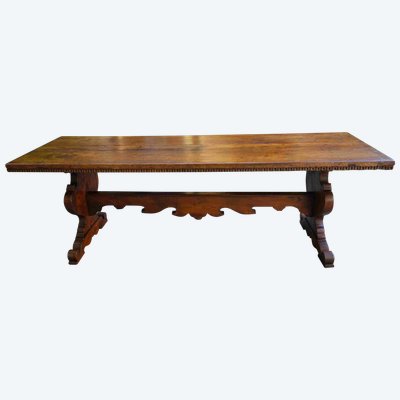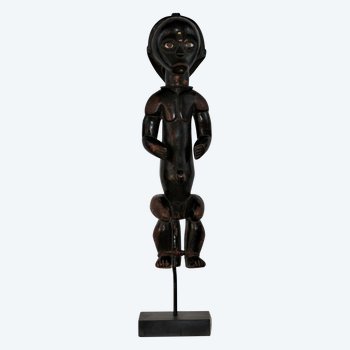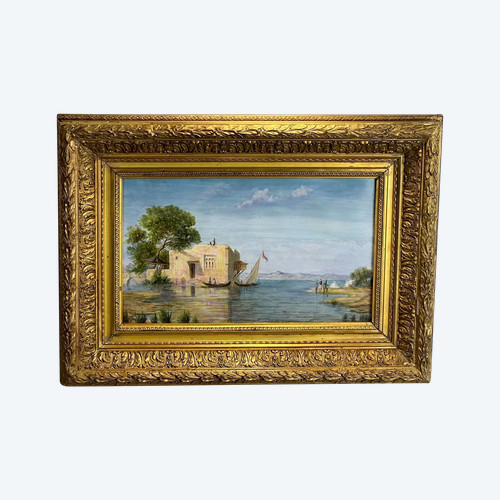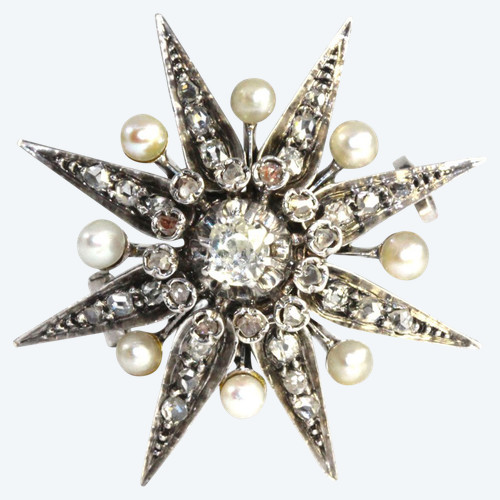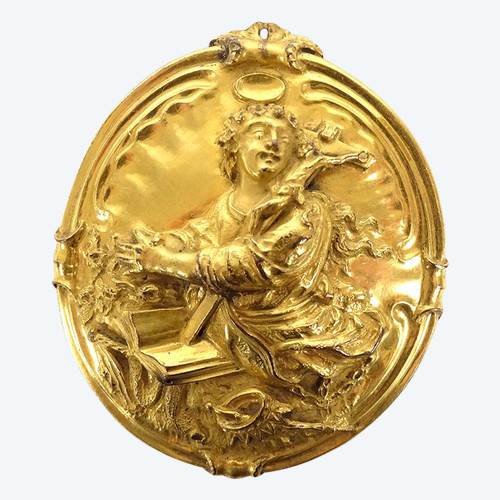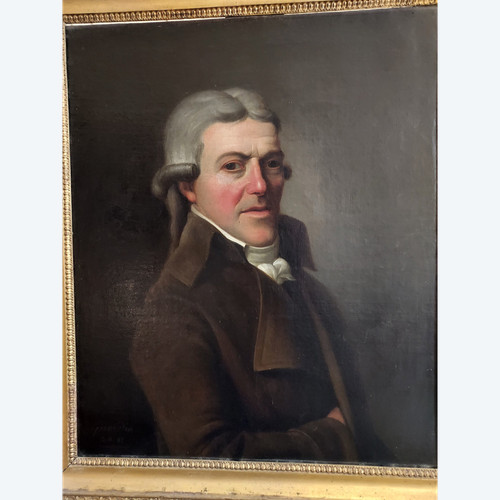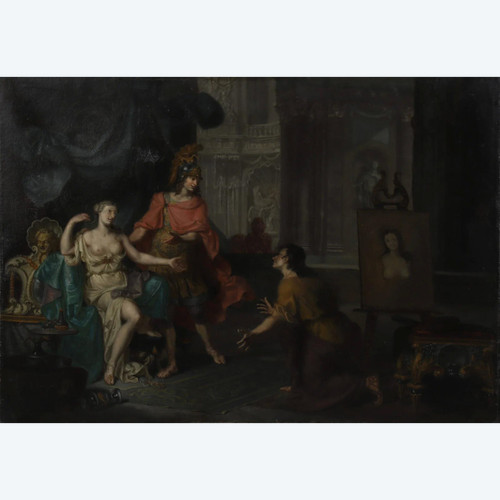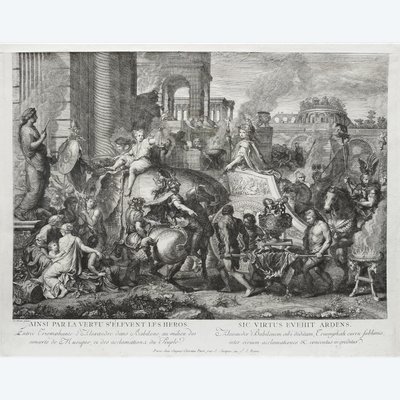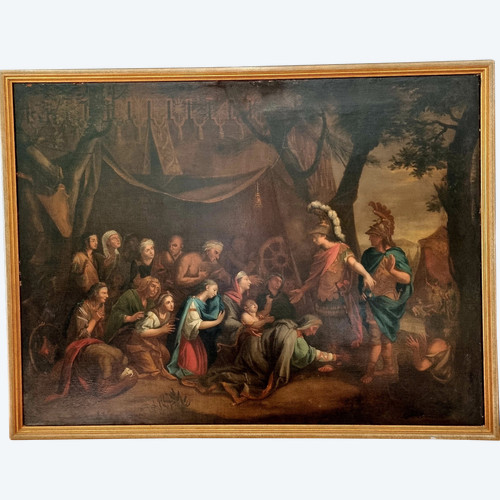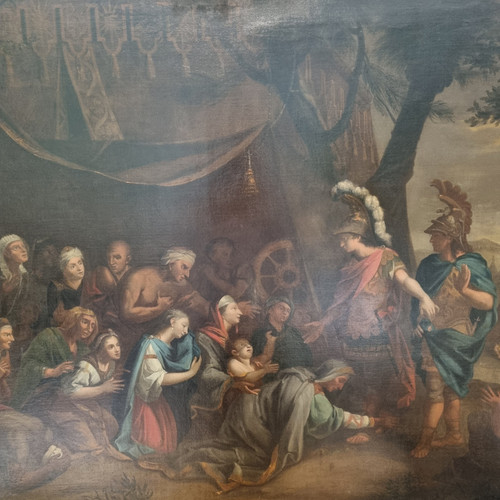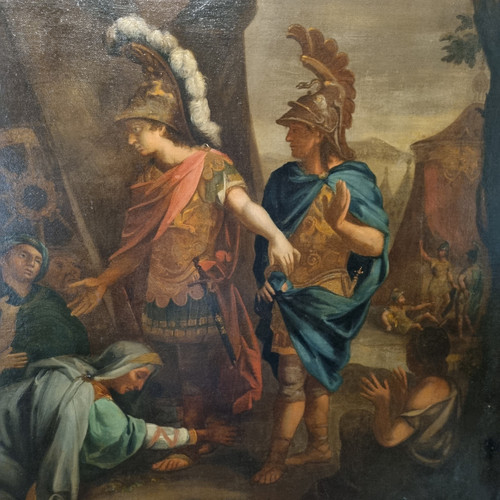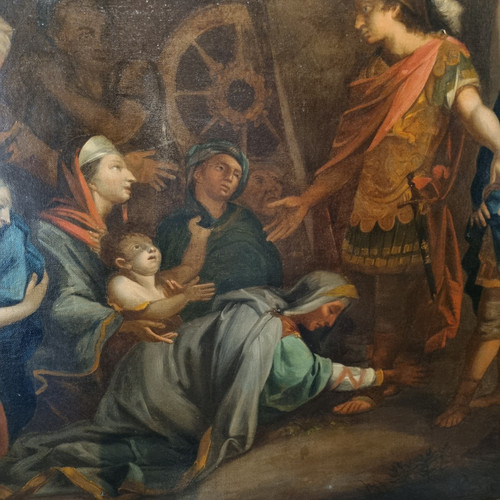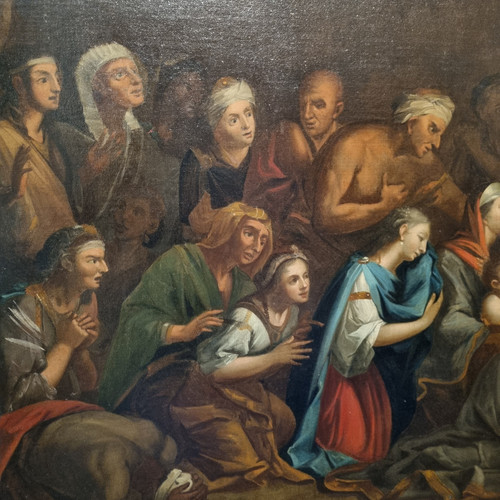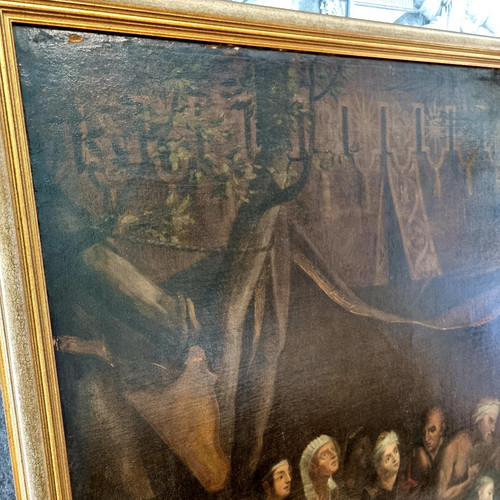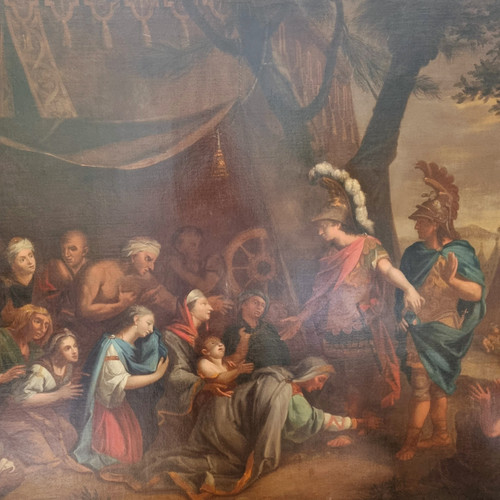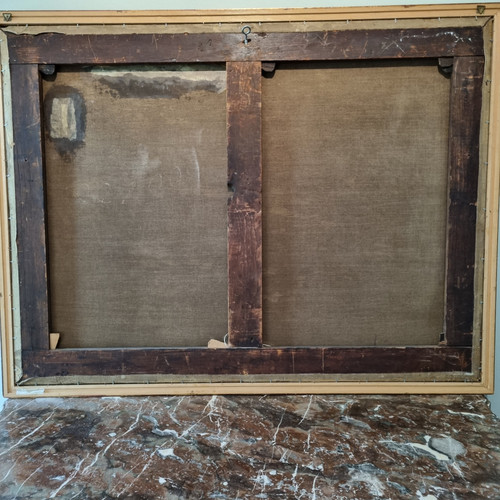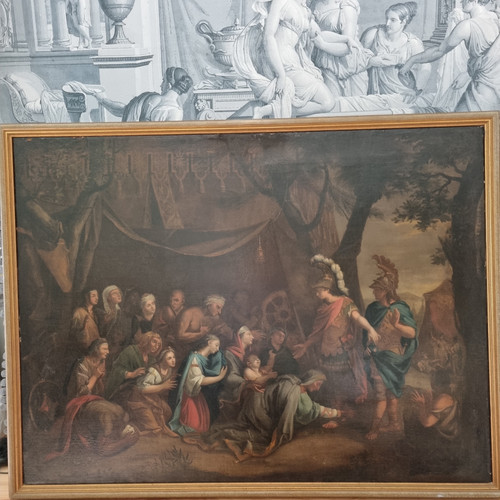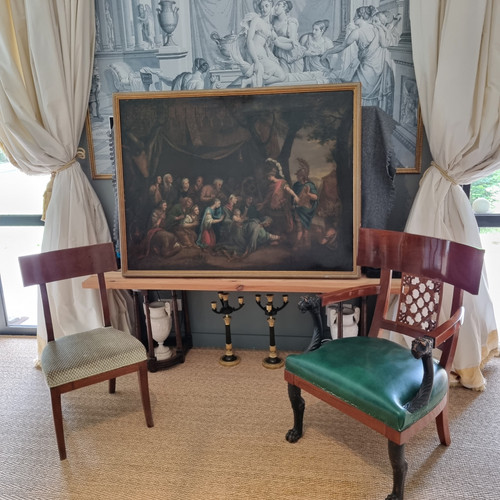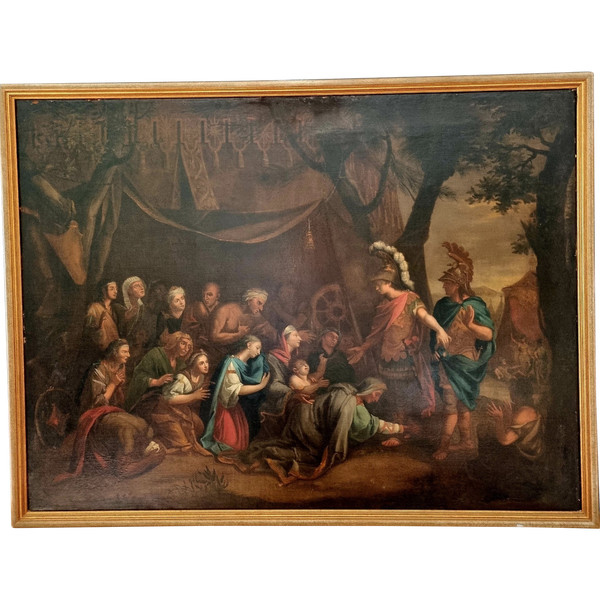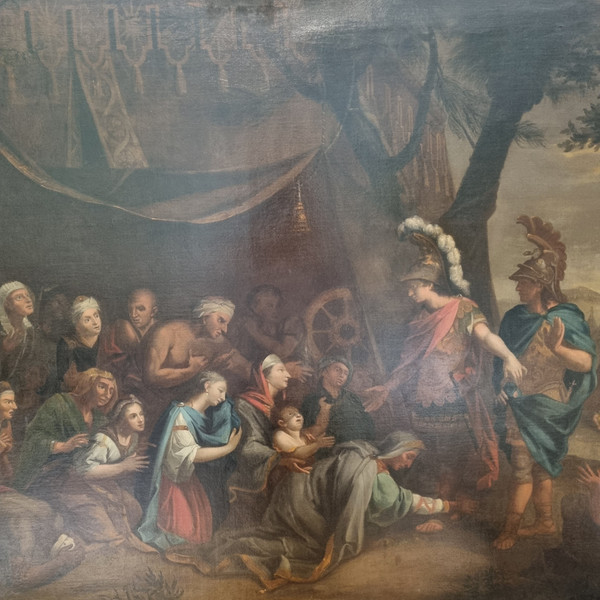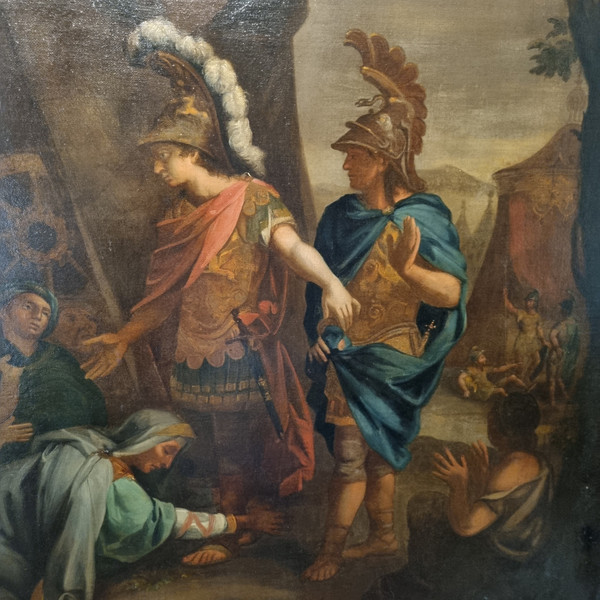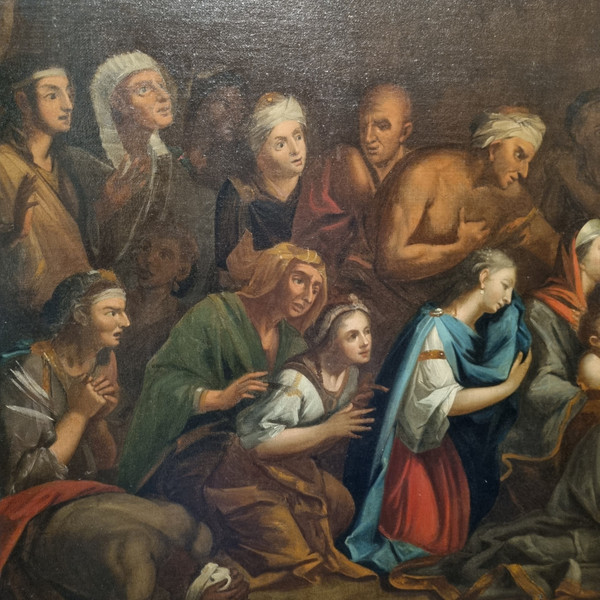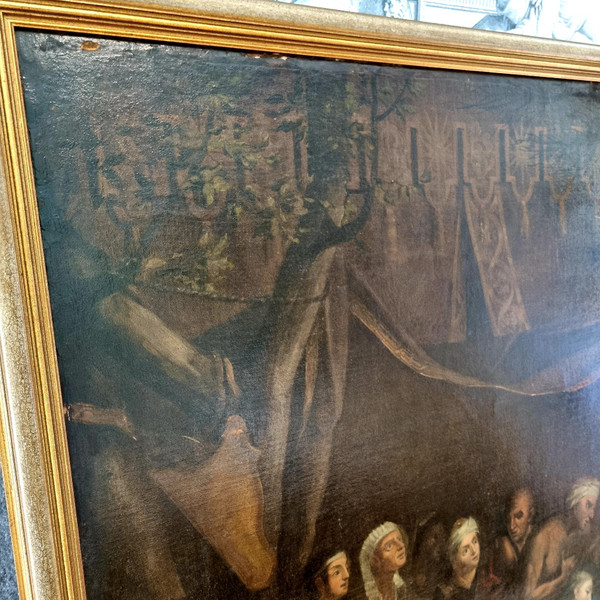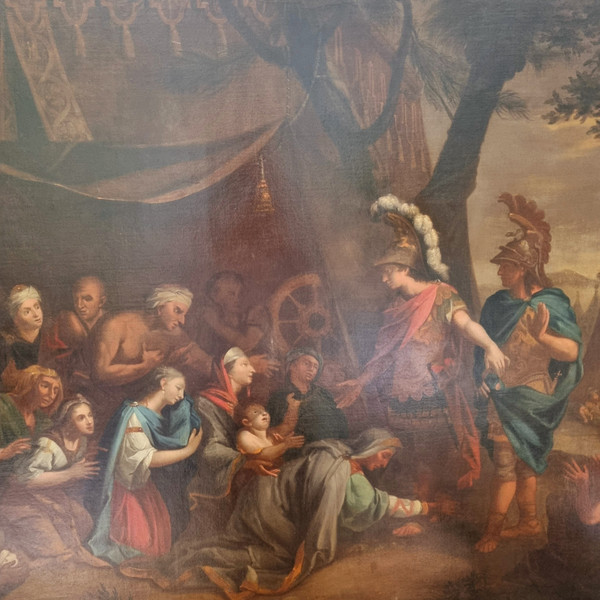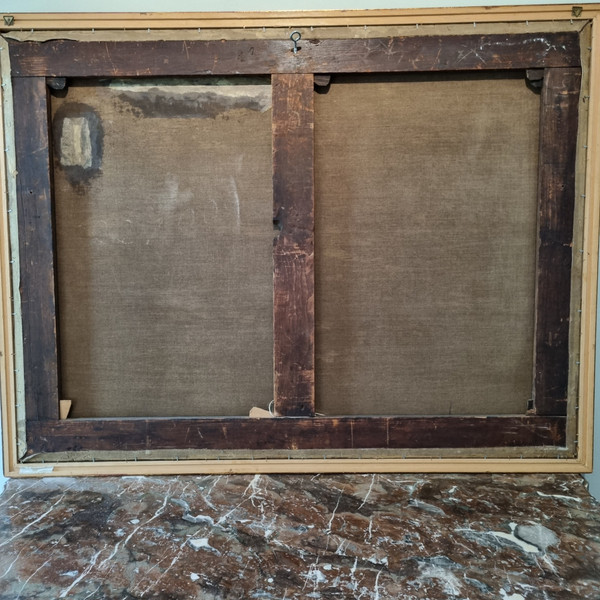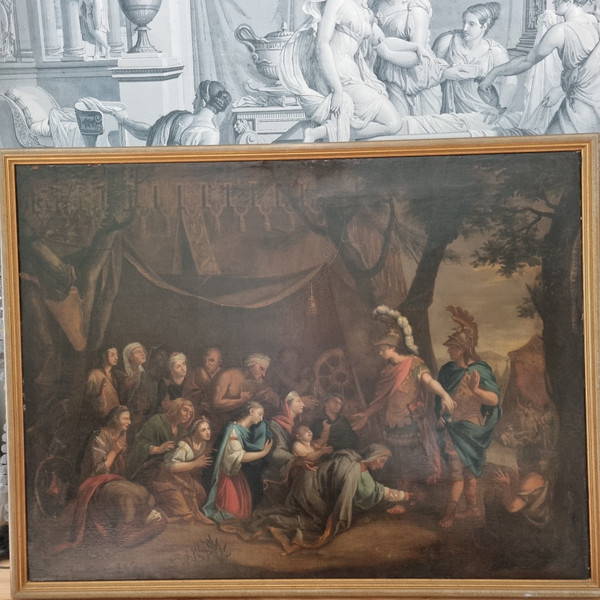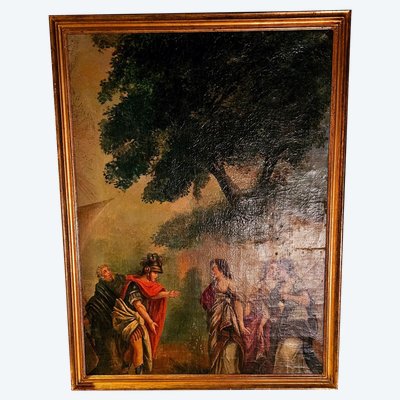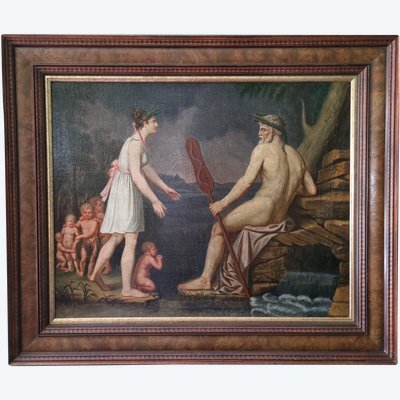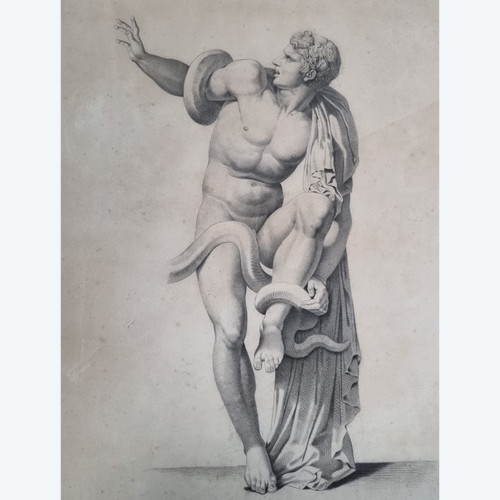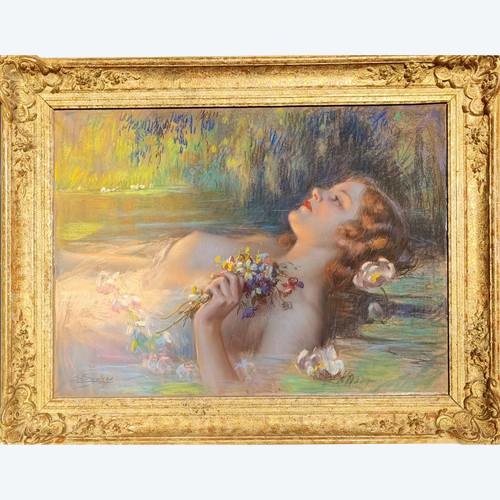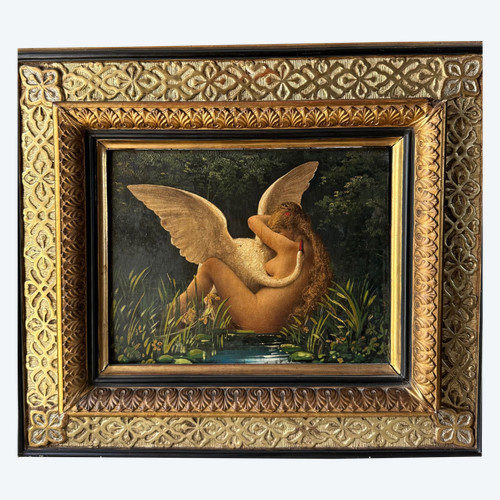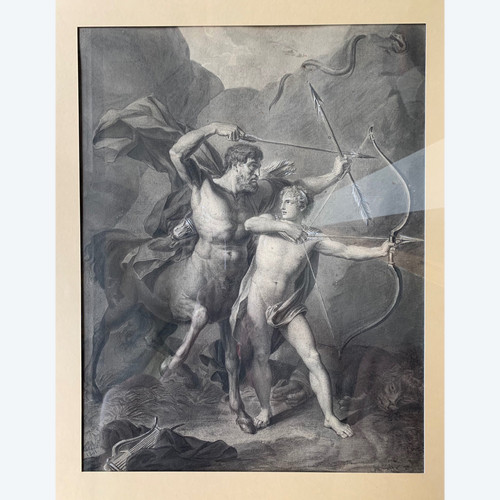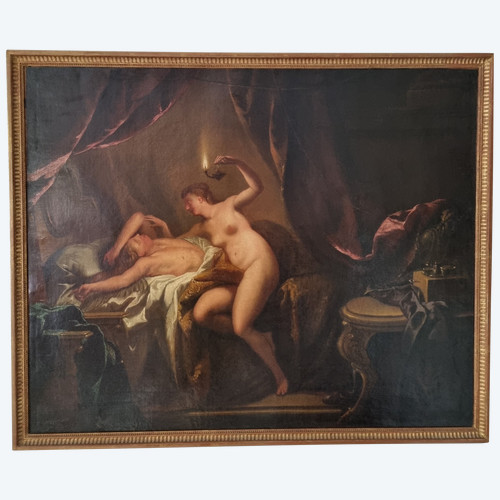This description has been translated and may not be completely accurate. Click here to see the original
Magnificent oil on canvas from the second half of the 17th century, based on Charles le Brun's famous composition.
Named in turn: "The Tent of Darius", "The Queens of Persia at the Feet of Alexander", "Alexander in the Tent of Darius" or Les reines de Perse aux pieds d'Alexandre", "Alexandre sous la tente de Darius" and "La famille de Darius aux pieds d'Alexandre".
The original work was probably painted at the end of 1660, when Charles Le Brun was staying at Fontainebleau, close to the king, and Louis XIV "came to see him at unexpected moments when he had the brush in his hand", as Claude Nivelon, born around 1630, disciple and first biographer of Charles Le Brun, explains.
The painting depicts Darius' mother throwing herself at the feet of the King of Macedonia, her son's victor at the battle of Issos (333 BC), to beg for clemency for her imprisoned family.
Now, LOOK CAREFULLY at the scene and discover the origin of one of Alexander's most famous lines:
After his stunning victory over Darius III at the Battle of Issos - who, by the way, cowardly deserted the battlefield - Alexander took possession of the defeated man's royal tent.
Darius' mother, mistakenly, rushes to the feet of Hephaestion (blue toga), friend and loyal lieutenant of Alexander (red toga). Hephaestion's non-verbal attitude expresses his surprise and his refusal to be taken for his pygmalion.
Moreover, Alexander takes no notice of this misunderstanding. Turning to Darius' daughter (red shawl, carrying her son Ochus), and stopping Hephaestion with his left arm, he declares his famous line: "This one is Alexander too".
Alexander then announces to the women that Darius is not dead, but on the run, spares them and allows them to bury their dead.
The scene is inspired by a sequence from Plutarch's Lives of Illustrious Men and a passage from Quinte Curce, but also by contemporary plays centered on the Macedonian hero: Claude Boyer in 1648 (Porus ou la Générosité d'Alexandre), Morel in 1658 (Timoclée ou la Générosité d'Alexandre, tragi-comédie), were already emphasizing the greatness of the soul of Darius' conqueror.
Charles le Brun naturally made several copies of this work, and like most 17th-century painters, some in inverted composition.
This is the direction chosen by Charles le Brun's follower, who produced this oil on canvas just after the original was exhibited, between 1660 and 1700.
The work is in a very fine state of preservation with its original canvas, a weave characteristic until the mid-18th century (thicker threads and irregular weave). This linen canvas is more likely to be of French origin. The vast majority of 17th-century Italian canvases were made of hemp.
Slightly missing at top left.
Two old repairs.
A very fine oil on canvas from the late 17th century.
Dimensions :
129 cm / 97 cm
As with all my art objects and furniture, I take great care to offer them at a very low expert estimate.
On request, I can arrange delivery in France and abroad.
Shipping terms depend on your location. Contact me to find out how much it will cost and to organize your delivery.
I take great care to ensure that your purchases are properly packaged and protected.
As I don't put all my Furniture and Works of Art on Proantic, I invite you to follow my Instagram account where you can enjoy all the latest news: @monantiquaire
Ref: YKFGBU7PAM
 Large Italian abbey table in walnut
7.500 € EUR
Large Italian abbey table in walnut
7.500 € EUR
 Napoleon III Brooch Pearls and Diamonds
1.450 € EUR
Napoleon III Brooch Pearls and Diamonds
1.450 € EUR

